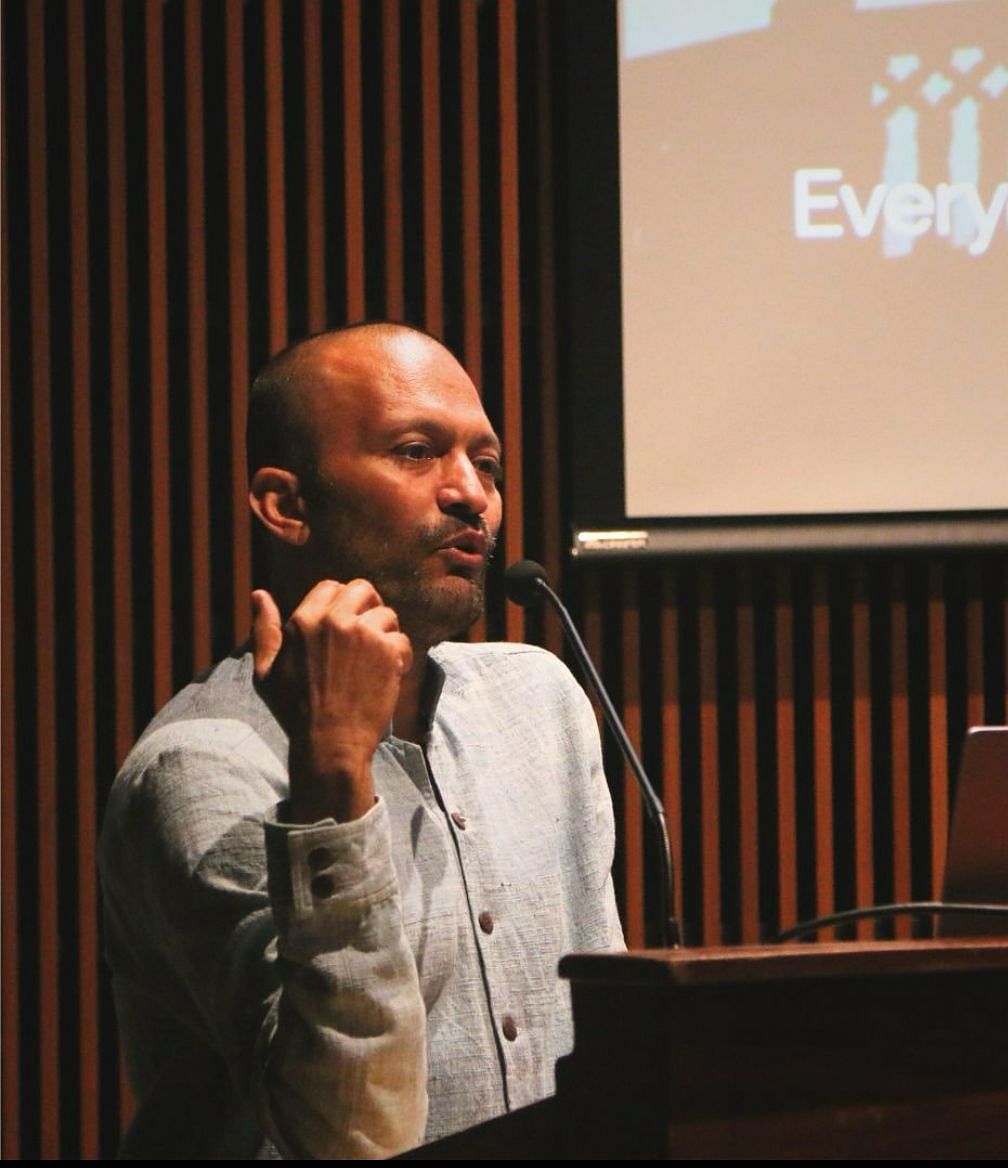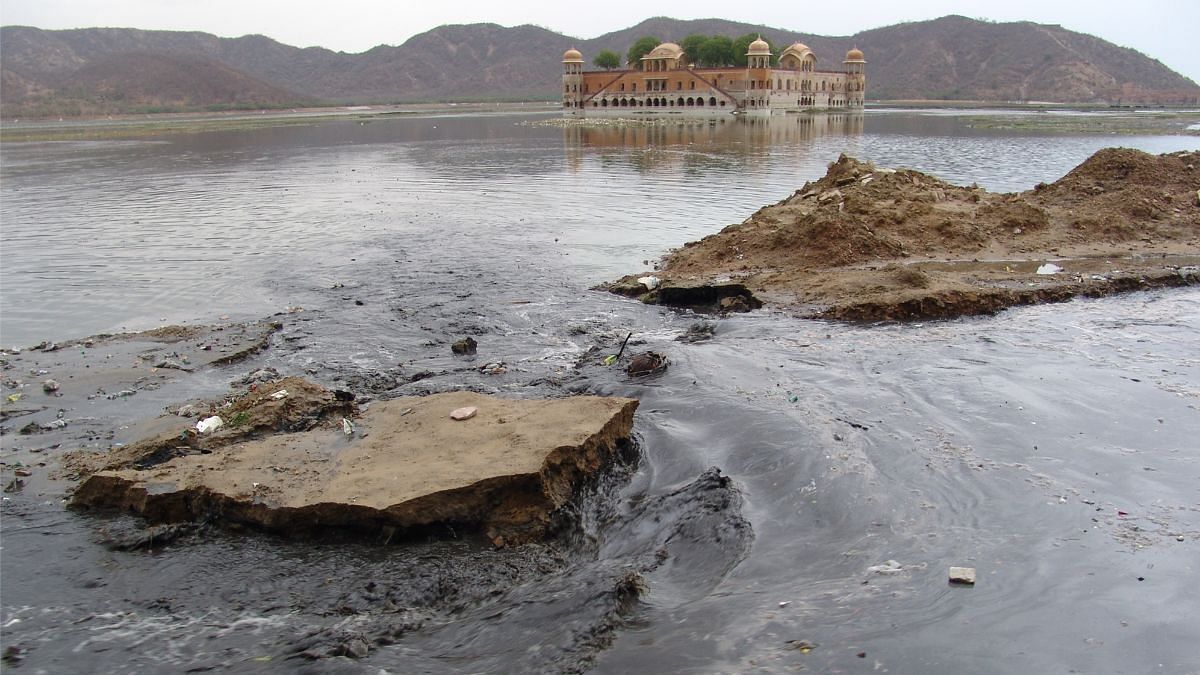New Delhi: Jaipur’s Ramgarh Lake and Talkatora Lake have turned into barren wastelands, victims of years of neglect and slow decay. Man Sagar Lake, along with its iconic Jal Mahal, was also on the brink of a similar fate. But in 2005, cultural innovation architect Rajeev Lunkad stepped in to save them.
Now, two decades later, he has chronicled the restoration journey in his book Jal Mahal: Revival of the Pleasure Palace. The 52-year-old unveiled what he calls his “labour of love” on 22 March at the Humayun Tomb Museum in New Delhi.
The auditorium, filled with an environment-conscious crowd, erupted in applause as Lunkad presented before-and-after images of Jal Mahal, showcasing the transformation from a crumbling monument to a revitalised architectural and ecological marvel.
“By documenting our journey, we’ve created a resource that will inspire and guide similar initiatives around the world,” Lunkad said. “It’s a testament to how heritage structures can be thoughtfully restored, respecting both their historical integrity and ecological context.”

Jal Mahal is a floating marvel, blending architecture, nature, and cultural heritage. This 55m x 55m pavilion, with a garden on its terrace, is situated in the heart of Man Sagar Lake.
Lunkad revealed recent images of Jal Mahal taken on a full moon night, where the palace’s reflection shimmered in the tranquil waters of the lake. “It creates a truly magical experience, encapsulating the essence of Jaipur’s royal heritage,” he said.
Restoring heritage
The restoration of Jal Mahal was a five-year endeavour that also focused on revitalising the Man Sagar Lake ecosystem.
Rajeev Lunkad joined the project as its director and divided the work into four phases:
“The first phase involved assessing the conditions and developing a comprehensive plan. Next came the environmental rehabilitation of the lake, followed by the meticulous restoration of the structure, and finally, the creation of Chameli Bagh garden and cultural installations,” Lunkad explained.
Although the Jal Mahal structure was fundamentally sound, centuries of exposure to fluctuating dry and wet conditions had caused severe damage, especially to the plasterwork, which had entirely eroded.

Each phase required precise execution, as Lunkad navigated a complex path—working with historical materials and traditional techniques while integrating modern engineering solutions where needed.
The restoration journey also had its own challenges.
One of the most pressing issues was the polluted state of Man Sagar Lake, which had become a dumping ground for Jaipur’s sewage and waste. “Restoring the monument would have been pointless without rehabilitating the lake,” Lunkad said, as he showed disturbing images of the lake’s degraded condition.
Reviving Man Sagar Lake was a massive, continuous undertaking that spanned about three years, although monitoring and maintenance continue to this day.
In this journey, Lunkad wasn’t alone. He worked alongside a multidisciplinary team of experts—environmental engineers, hydrologists, chemical engineers, ecologists, wildlife specialists, and botanists—to restore the lake’s ecosystem.
The first step was to identify the causes of the lake’s degradation, then create a comprehensive ten-step restoration plan addressing all aspects of the ecosystem. The restoration began with diverting sewage inflows and desilting the lakebed.
“We created wetlands and sedimentation zones to naturally filter polluted rainwater, modernised the dam’s overflow mechanism, and reintroduced native aquatic plants,” Lunkad explained. “We carefully selected plant species that could thrive in varying water depths and act as natural purifiers and habitats for wildlife.”
The ecological strategy tackled several aspects of water management simultaneously. The team diverted the Brahmpuri and Nagtalai drains, which had been channeling untreated sewage into the lake.
They also built a 7 MLD Tertiary Treatment Plant, constructed wetlands to provide clean water for the lake, and created a large sedimentation basin (around 40,000 square meters) and adjacent wetland (1,63,000 square meters) to treat stormwater runoff during the monsoon season. The team desilted the lake, increasing its average depth from 1.5 meters to 2.5-3.5 meters, removing decades of accumulated pollutants.
Additionally, filtration zones with specific aquatic plants were introduced to act as bio-cleaners. Water quality was carefully monitored to maintain a balanced ecosystem.
Impact on wildlife
Each monsoon season served as a real-world test for the effectiveness of their interventions.
In the first year, there were noticeable improvements in water quality, but it was by the third year that the ecosystem began to show signs of revival.
Lunkad observed a marked increase in biodiversity and the stabilisation of water quality parameters across the seasons.
“The revival has had a profound impact on wildlife,” Lunkad noted.
Before the restoration, as Lunkad explained during his presentation, the lake’s toxic conditions had rendered it nearly inhospitable for most species.
Now, around 170 bird species have been recorded around Man Sagar Lake, including many migratory species that had been absent from the area for decades. The most striking change has been the return of waterfowl such as northern shovellers, northern pintails, gadwalls, various pochard species, and bar-headed geese.
Fish populations have also made a strong comeback, with species like marigal carp, rohu, catla, and common carp flourishing at different depths of the lake. This, in turn, has attracted fishing birds such as kingfishers, cormorants, and herons.
(Edited by Ratan Priya)




